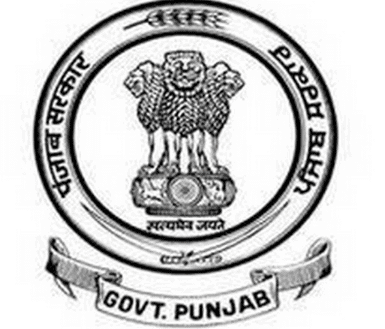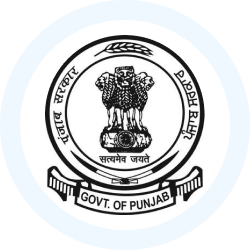Caste and Tribes of Punjab | Punjab State (PPSC) PSC: Preparation - PPSC PCS (Punjab) PDF Download
Scheduled Caste in Punjab
According to the 2011 Census, Punjab is home to 2.3% of India's Scheduled Caste (SC) population, with a decennial growth rate of 26.06% for the SC population, compared to 13.89% for the state overall.
The SC population is predominantly rural, with 73.33% living in rural areas and 26.67% in urban areas. Punjab has the highest proportion of Scheduled Castes in India, making up 31.94% of the state's total population (277.43 lakh).
The districts in Punjab with the highest SC populations include:
- SBS Nagar (42.51%)
- Firozpur (42.17%)
- Faridkot (38.92%)
- Kapurthala (33.94%)
- Hoshiarpur (35.14%)
- Bathinda (32.44%)
- Fatehgarh Sahib (32.07%)
- Muktsar Sahib (42.31%)
- Jalandhar (38.95%)
- Moga (36.50%)
- Tarn Taran (33.71%)
- Mansa (33.63%)
- Barnala (32.24%)
Some of the Scheduled Castes in Punjab include:
- Ad-Dharmi
- Barar, Burar or Berar
- Bangali
- Bauria or Bawaria
- Balmiki, Chura or Bhangi
- Chamar, Jatia Chamar, Rehgar
- Dagi
- Dumna, Mhasha or Doom
- Deha, Dhaya, Dhea
- Gagra
- Kabirpanthi or Julaha
- Marija or Marecha
- Mazhabi, Mazhabi Sikh
- Mochi
- Batwal
- Bazigar
- Bhanjara
- Chanal
- Dhanak
- Darain
- Dhogri, Dhangri, Siggi
- Ganadhila or Gadeil
- Khatik
- Kori or Koli
- Megh
- Nat
- Od
- Pasi
- Perna
- Pherera
- Sanhai
- Sanhal
- Sansoi
- Sansi, Bhedkut or Manesh
- Sapela
- Sikligar
- Raisikh, Mahatam
- Sarera
- Sirkiband
- Raigar, Ramdasia, Ramdasia Sikh, Ravidasia, Ravidasia Sikh
Literacy Rate Among Scheduled Castes
Literacy and education are fundamental indicators of the development level achieved by a group or society. Increased literacy fosters greater awareness and contributes to the overall enhancement of health, hygiene, and various social conditions. According to the Census 2011, the literacy rate among Scheduled Castes (SCs) is 64.81%. In comparison, the overall literacy rate for the state is 75.84%, while the national average is 73.00%. Within the SC community, the female literacy rate stands at 58.39%, and the male literacy rate is 70.66%.
Constitutional Provisions for Scheduled Castes
The Constitution of India includes several provisions aimed at protecting and promoting the interests of Scheduled Castes (SCs). Here are the key articles related to Scheduled Castes:
- Article 15(4): This article allows the State to make special provisions for the advancement of socially and educationally backward classes, including Scheduled Castes and Scheduled Tribes.
- Article 16(4): Article 16(4) permits the State to reserve appointments or posts for any backward class of citizens.
- Article 46: Article 46 mandates the State to promote the educational and economic interests of weaker sections, including Scheduled Castes and Scheduled Tribes. It also requires the State to protect them from social injustice and exploitation.
- Article 330: This article provides for the reservation of seats for Scheduled Castes and Scheduled Tribes in the House of the People (Lok Sabha).
- Article 332: Article 332 allows for the reservation of seats for Scheduled Castes and Scheduled Tribes in the Legislative Assembly of States.
- Article 335: This article stipulates that the claims of Scheduled Castes and Scheduled Tribes should be considered in the appointment to services and posts, consistent with the efficiency of administration.
- Article 338: Article 338 provides for the establishment of the National Commission for Scheduled Castes to monitor and evaluate the implementation of welfare measures for SCs.
- Article 341(1): This article empowers the President, in consultation with the Governor, to specify the castes, races, or tribes to be notified for Scheduled Castes by public notification.
Punjab State Scheduled Castes Commission
The Punjab State Scheduled Castes Commission was established on February 16, 2004, under the Punjab State Commission for Scheduled Castes Act. The commission aims to protect and safeguard the interests of Scheduled Caste individuals in Punjab. It comprises a Chairman, three non-official members, ex-officio members, and a Member Secretary.

Welfare Schemes for Scheduled Castes in Punjab
The Punjab government has launched various social welfare schemes aimed at the upliftment of Scheduled Castes (SC) and Tribes in the state. Some of these schemes include:
- Shagun Scheme (Ashirwad Scheme): Initiated in 1997-98, this scheme provides financial assistance for the marriage of Scheduled Caste, Backward Class, and Christian girls.
- Pre-Matric Scholarship Scheme:. centrally sponsored initiative aimed at supporting parents of SC children studying in classes IX and X to reduce dropout rates and improve participation in secondary education.
- Special Grant for Scheduled Caste Girl Students: This scheme offers financial assistance to uplift Scheduled Caste girl students pursuing post-matric and post-graduate studies.
- Career Counselling for SC Students: Career guidance is provided to SC students in grades 9 to 12, across all government and private schools at the district level.
- Punjab Scheduled Castes Land Development and Finance Corporation (PSCFC): This initiative offers loans and subsidies to Scheduled Caste families with specific income criteria, aiming to improve their financial conditions.
- Scholarships for SC/ST Students: The Punjab State Government provides scholarships to SC/ST students, along with medical kits and nutritious meals.
- Home to Houseless Scheme: Financial assistance is provided for purchasing plots and constructing houses in rural areas, along with additional funds for toilet construction under the Rural Sanitation Programme.
- Awards for SC Sports Students: This scheme, started in 1990-91, aims to encourage sports among Scheduled Caste students by awarding them for their achievements in sports competitions at the block level.
Encouragement Awards to SC Girl Students for Pursuing 10+2 Education:
- The dropout rate among Scheduled Caste (SC) girl students is alarmingly high, with rates of 30.13% at the Primary level, 46.96% at the Middle level, and 63.62% at the Secondary level.
- Additionally, the female literacy rate among SCs in Punjab is very low.
- In response to this issue, the Punjab Government implemented a scheme in 2007-08 to encourage SC girl students to continue their education.
- Under this scheme, each SC girl student in 11th and 12th grades will receive a lump sum amount of ₹3000 every year to support their studies.
Award to Brilliant Scheduled Caste Students:
- Under this initiative, Scheduled Caste (SC) students from 6th to 12th grade are recognized and rewarded for their academic excellence.
- Students who achieve the 1st, 2nd, and 3rd positions in their educational block are awarded ₹100 per month as a recognition of their hard work and achievements.
Scheduled Tribes in Punjab
Punjab's population is a diverse blend of various tribes and classes, with some minority tribes including Awans, Arains, Kalals, Ahluwalias, Labanas, Pathans, Nais, Sainis, Kambohs, and Soods. These tribes can often be further divided into smaller clans and family groups. Other tribes in the region include Banias, Bhatias, Brahmins, and Chhimbas, some of which have heritage from Arabian, Persian, and Turkish ancestry.
The Sikh Jat community is the largest group in Punjab, known for their expertise in agriculture and significant contribution to the region's agricultural output.
Following the Jats, the Khatris and Aroras are the next largest communities. The Khatris are divided into several groups, including the Dhaighares, Charzatis, Punjazatis, Chhezatis, Sarins, Bahris, and Khakrains. They claim descent from the Kshatriyas of the Aryan race. The Aroras also assert a Khatri origin.
Minority tribes in Punjab are involved in both agriculture and local trading. Among the minor agricultural tribes, the Sainis and Kambohs are prominent. The Sainis trace their origins to the Rajputs, while the Kambohs are believed to come from ‘Kamboj Desh’ in Afghanistan. Other minority groups like the Bawris, Baazigars, and Pakhiwaras have retained their aboriginal customs and beliefs. Each village in Punjab has its own distinct customs and rituals, and every community possesses unique social practices.
|
23 videos|50 docs|47 tests
|
















